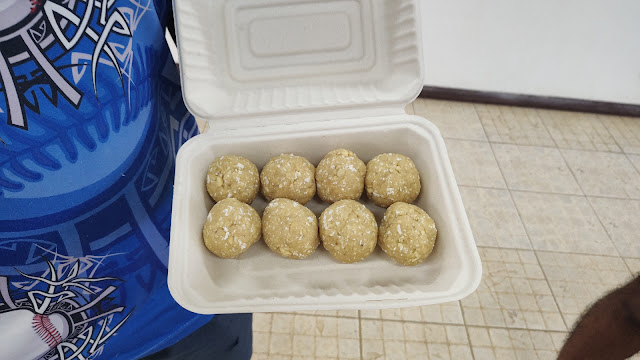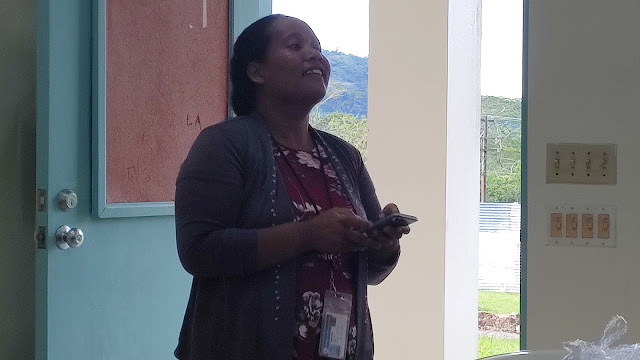Local plant based foods in Micronesia
The students in the ethnobotany course brought in local foods to present to the rest of the class.
Andretti and Devron brought in uter mwahng, also known taro balls. Discussion arose over the name of this particular food. Subsequent checks of the Pohnpeian dictionary suggests that uter mwahng is the appropriate spelling.
Ivan brought in banana chips which is called uht pirain. The word pirain derives from the English word "fry" as Pohnpeian typically substitutes a "p" for an "f" for imported words.
Jaser and A.J. brought in yams, uncooked.
Kehp pirain is fried yam fritters.
Daman and Rodson presented the kehp pirain, a local favorite.
Mortlockese konen pula. Pula is taro. Konen pula always has patterns grooved into the top surface. The taro is boiled for three to four hours.
Clayton, Elias, and Maygan presented sawa sukusuk. Soft taro that is cooked and pounded, with coconut milk.
A Micronesian favorite: yam chips. Kehp pirain. Fried thin slices of yam. Note that the name is the same as the yam fritters.
Mary May noted that she prepares her yam chips using vegetable oil.
Jessa presented uht idihd. Green skin banana. Basin of water. Grater, knife, pot. Grate the raw banana. Then take the banana and put in leaves. Boil until done. Ten or fifteen minutes.
This is another variant of kehp pirain and is a good example of why seeing the actual food is important. Yam fritters, yam chips, and the above variation on yam fritters are all called kehp pirain.
Ashli presented her kehp pirain recipe.
Shaquille brought in mwahng called pula in Mortlockese. This is an ancestral food. Although today pula is more often boiled, in the past pula was cooked in the ground oven using heated coral rocks. According Shaquille either sex can cook with the ground oven. On Pohnpei and Kosrae only men work with the ground oven, the uhm.
Kapingan baidala tuki (sawa sukusuk) but this one was said to be mwahng (hard taro) and sawa (soft taro). Boiled. Stir in coconut milk. This was wonderful. A rich, sweet flavor and the hard taro was soft compared to the boiled hard taro I am accustomed to here.
Joana then ran a presention on the SmartBoard on the production of the baidala tuki. In Kapinga the women engage in harvesting the taro, both hard (bulak) and soft (tala) taro. This too is different from islands such as Pohnpei and Kosrae. On Pohnpei only men harvest yams, their prestige starch. On Kosrae only men harvest the hard taro.
Sharla presented uht idihd pihiaia
Kenygie spoke about Kosraean soup in the abstract.
Maii gabwesh is Lamotrekese pounded breadfruit, but the presentation is as tasty little bite size dumplings. These too were wonderful.
A form of uht pirain



























Comments
Post a Comment